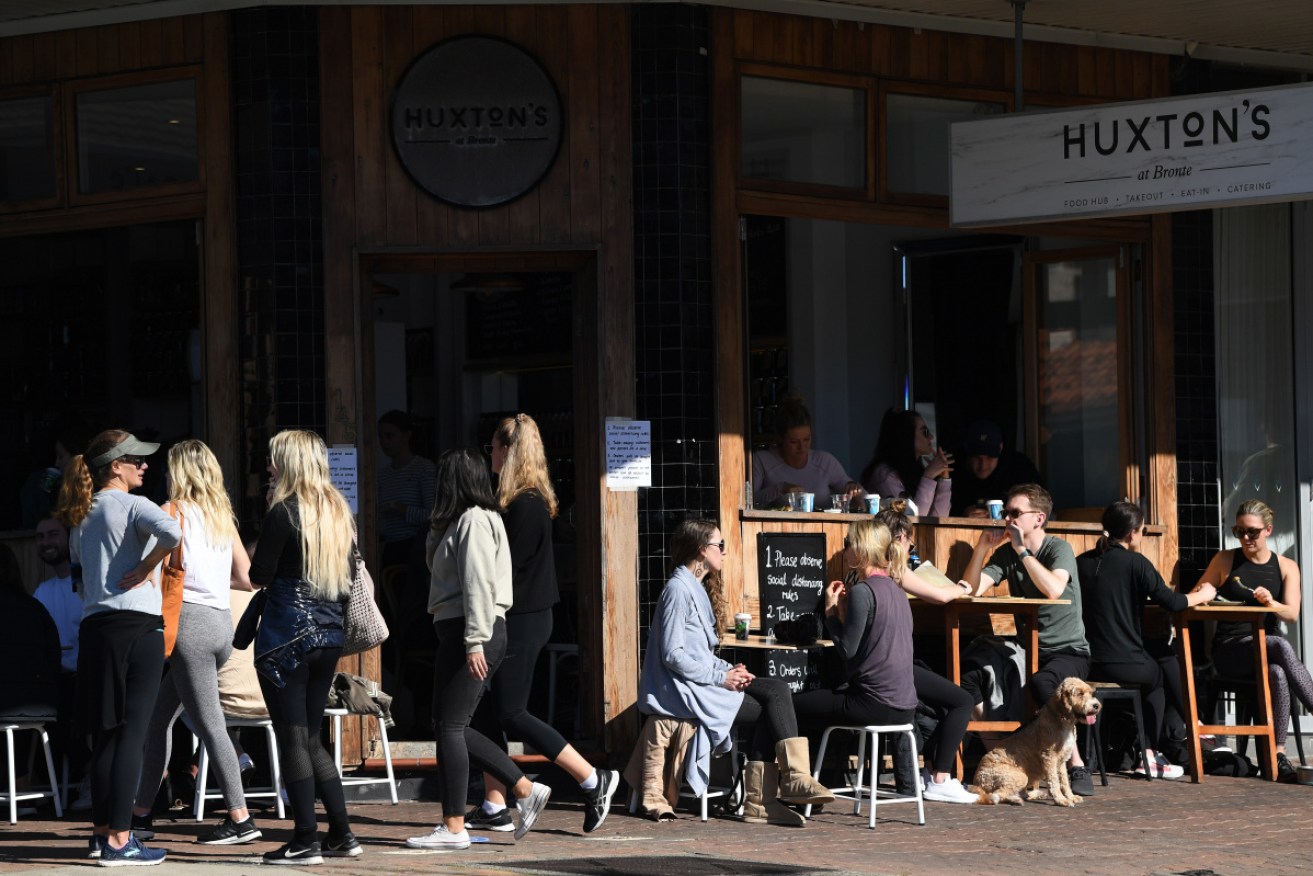‘Canary in the coal mine’: Small business woes paint worrying economic picture


The NSW government is restarting a voucher program to give the hospitality sector a boost. Photo: AAP
New figures show businesses created roughly 63,000 jobs in the last two weeks of October.
All states and territories except Tasmania added more jobs than they lost over the fortnight as confidence returned to households and businesses.
But economists are concerned about the impact of reducing the rate of JobKeeper, particularly for small businesses.
The latest figures were based on single-touch payroll data from the Australian Taxation Office and published by the Australian Bureau of Statistics.
Coming less than a week after data revealed national retail spending had surged after Victoria eased restrictions, they showed the number of payroll jobs increased by 0.5 per cent over the two weeks to October 31 – after falling by 0.1 per cent during the previous fortnight.
Based on a rough extrapolation from ABS labour force data, that equates to roughly 63,000 new jobs in two weeks.
Independent economist Saul Eslake said there had been a net loss in jobs in four out of the five previous weeks, but a net increase in the last week of October, thanks to job creation in all states except Tasmania.
He said the easing of restrictions in Victoria was the most obvious driver of jobs growth, as the state had experienced the fastest jobs growth in the fifth week of October (up 0.9 per cent).
But because other states also experienced a net increase in jobs, he said the figures were more likely to be further “evidence of a positive reaction of businesses and consumers to the budget”.
“It’s only a week’s data, so it’s hard to read too much into it,” he said.
Angela Jackson, lead economist at Equity Economics, said the figures showed signs of a positive and expected recovery in Victoria.
But she highlighted small business employment as a major problem.
As the graph below indicates, the data points to increased job shedding among smaller businesses since the rate of JobKeeper was reduced and eligibility tightened at the end of September.
“They’re probably suffering more. That’s part of it,” Ms Jackson said.
“But I think also they would rely more on casual staff and those employment contracts where letting people go doesn’t require a huge redundancy round and its own cost.
“Those jobs would be ‘less sticky’, if you like.”
Ms Jackson said she was worried that the reduction in small business employment could be a lead indicator of “real economic conditions”.
She said the 11th straight week of rising consumer confidence provided some cause for optimism, but was unreliable as an economic indicator, as Australians were feeling ‘artificially’ positive after good news on the vaccine front and the easing of restrictions in Victoria.
What’s more, the recovery depends on businesses taking risks and investing in the economy, she said. Not on consumer confidence.
Those small businesses could be the canary in the coal mine,” she said.
After the ABS released its latest figures, Indeed APAC economist Callam Pickering said he expected “a strong rebound in jobs in the lead up to Christmas”.
But he added the pandemic would leave “a long and lingering shadow over the Australian economy”.
“The economy is also dealing with the reduction in JobKeeper and JobSeeker payments, which will prove disruptive for some industries across the country,” he said.
“That could create high levels of volatility in business and industry performance over the next six months.”
Asked whether the fall in small business employment since September 26 was triggered by cuts to JobKeeper, Mr Pickering said we needed to be cautious about drawing that conclusion, as the payroll figures were often revised upwards and especially for small businesses.

The ABS data is normally revised upwards. Source: Indeed
“For example, small business payrolls for October 3 were revised upwards by 4.5 per cent. For medium-sized businesses, they were revised up by 0.9 per cent. And for large businesses, they were revised down by 1.1 per cent,” he said.
“These revisions are large enough that they could fundamentally change our interpretation of the data.”
But, Mr Pickering added: “My best guess is that there has been a little impact from the JobKeeper taper, but the impact will become much clearer in two weeks when the next set of data is released.”










